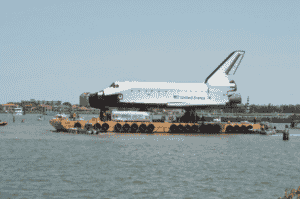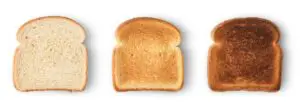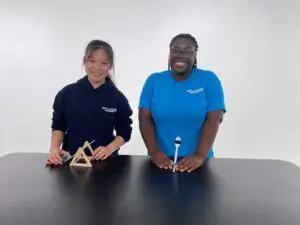Activity Content Sections
Instructions
Relevant Terminology

Barges are wide, flat-bottomed boats designed to carry heavy loads, like this replica space shuttle. Credit: NASA.
Buoyancy: An object’s ability to float in water or other fluid.
Density: How much something weighs as compared to how big it is—or, an object’s mass per unit volume. Something big and light, like a balloon, has low density. Something small and heavy, like a rock, has high density.
Displacement: The moving of something from one place to another. For example, when an object is placed in water, it pushes some water out of the way and takes its place.







18 Comments
Thank you